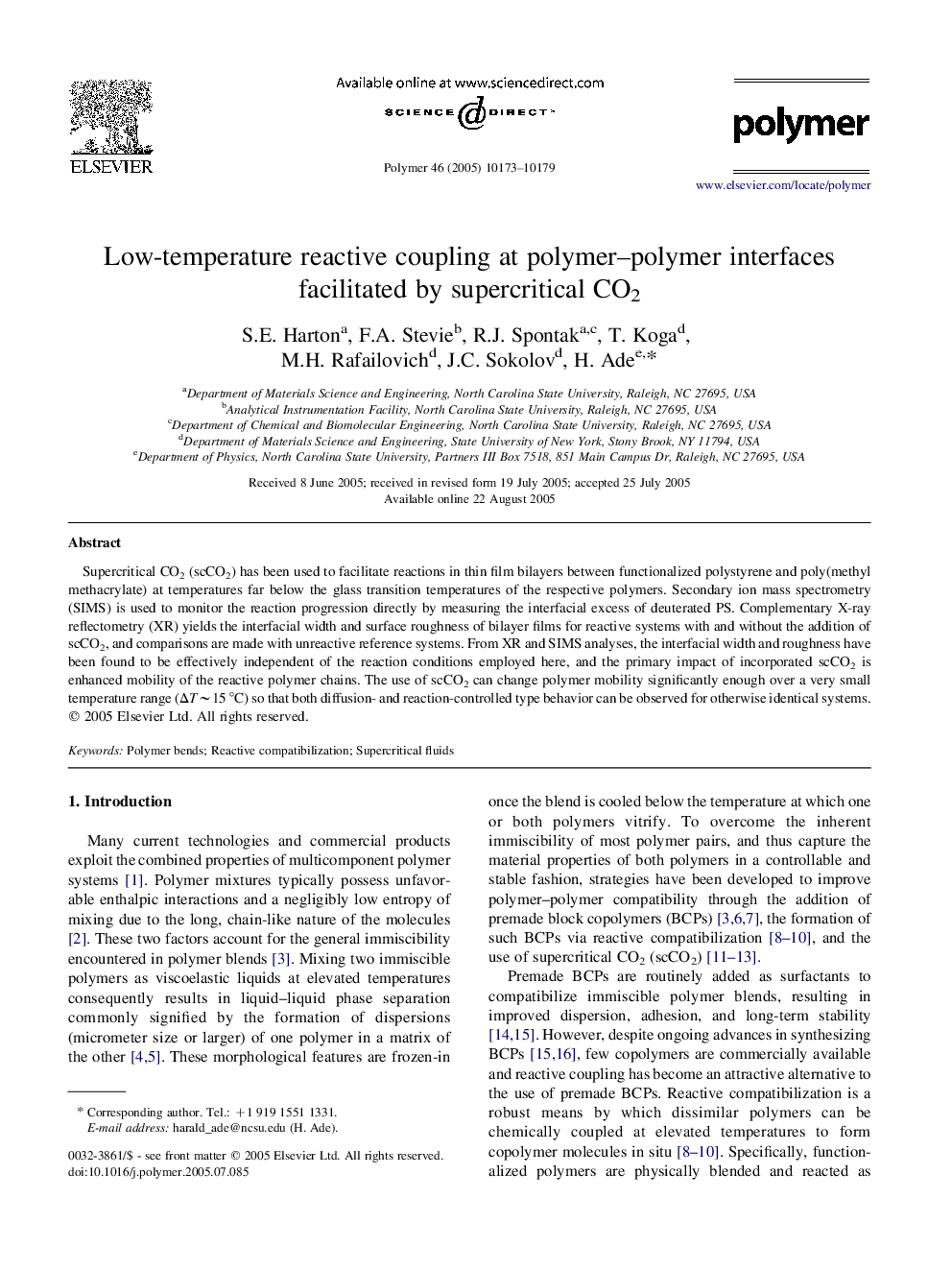| Article ID | Journal | Published Year | Pages | File Type |
|---|---|---|---|---|
| 5189889 | Polymer | 2005 | 7 Pages |
Supercritical CO2 (scCO2) has been used to facilitate reactions in thin film bilayers between functionalized polystyrene and poly(methyl methacrylate) at temperatures far below the glass transition temperatures of the respective polymers. Secondary ion mass spectrometry (SIMS) is used to monitor the reaction progression directly by measuring the interfacial excess of deuterated PS. Complementary X-ray reflectometry (XR) yields the interfacial width and surface roughness of bilayer films for reactive systems with and without the addition of scCO2, and comparisons are made with unreactive reference systems. From XR and SIMS analyses, the interfacial width and roughness have been found to be effectively independent of the reaction conditions employed here, and the primary impact of incorporated scCO2 is enhanced mobility of the reactive polymer chains. The use of scCO2 can change polymer mobility significantly enough over a very small temperature range (ÎTâ¼15 °C) so that both diffusion- and reaction-controlled type behavior can be observed for otherwise identical systems.
